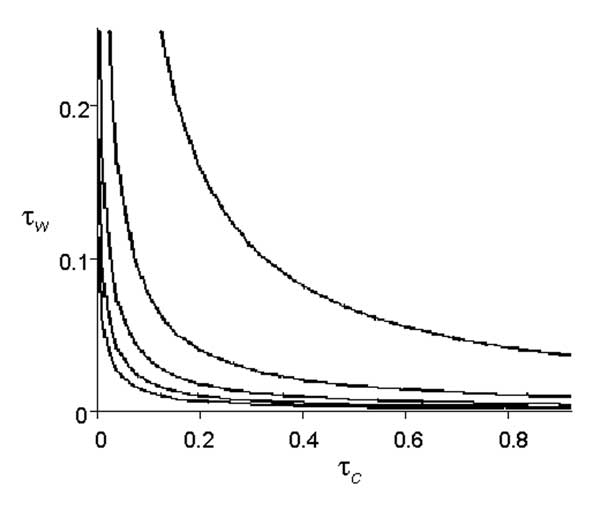Volume 9, Number 2—February 2003
Research
Applying Network Theory to Epidemics: Control Measures for Mycoplasma pneumoniae Outbreaks
Figure 4

Figure 4. . Epidemic thresholds. Each line assumes a different value for μc(the average number of wards per caregiver), and graphs the combination of τc and τw(transmission parameters) above which the population crosses the epidemic threshold. From top to bottom, the lines represent μc= 1, μc= 2, μc= 3, μc= 4, and μc= 5 .
1We calculate these rates by averaging the fraction of infected patients per ward across the 15 wards and compute the error by taking the standard deviation of these fractions, divided by the square root of the sample size.
Page created: April 20, 2012
Page updated: April 20, 2012
Page reviewed: April 20, 2012
The conclusions, findings, and opinions expressed by authors contributing to this journal do not necessarily reflect the official position of the U.S. Department of Health and Human Services, the Public Health Service, the Centers for Disease Control and Prevention, or the authors' affiliated institutions. Use of trade names is for identification only and does not imply endorsement by any of the groups named above.